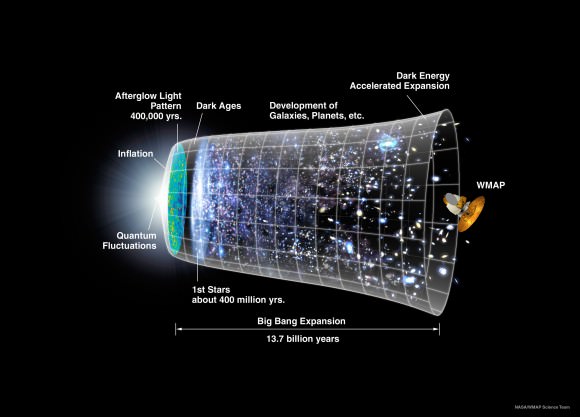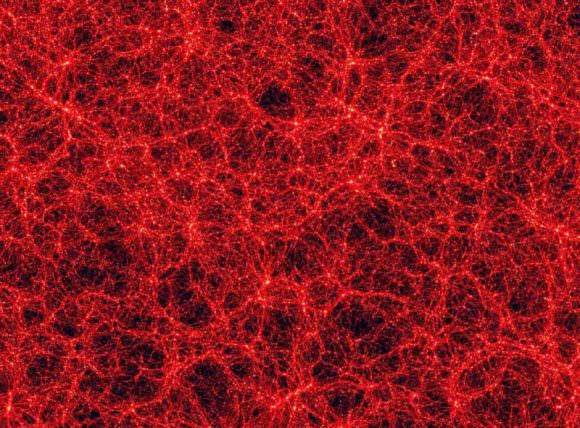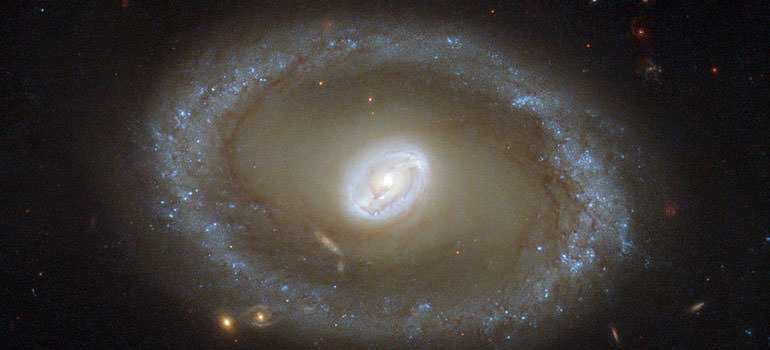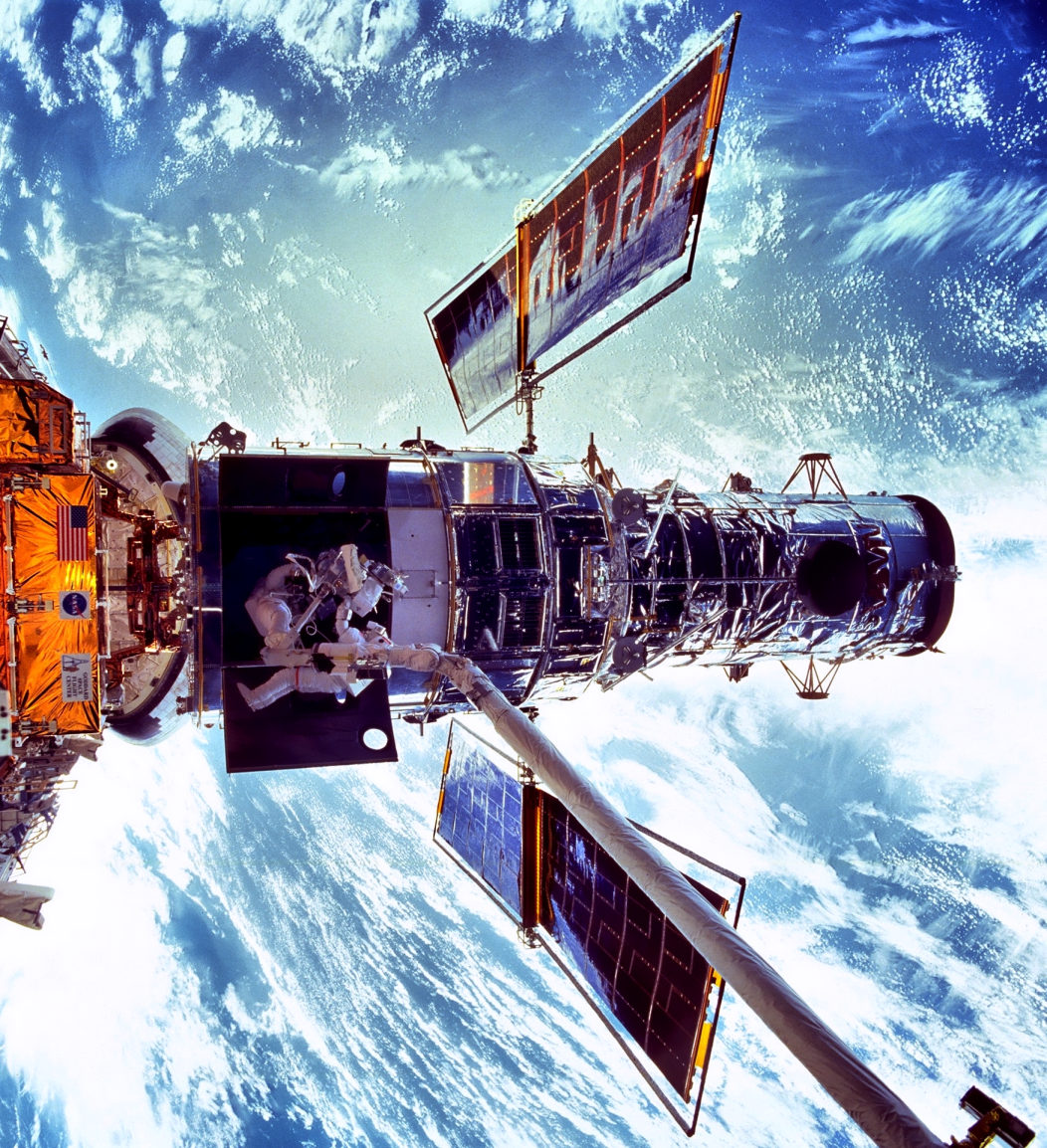Since the late 1920s, astronomers have been aware of the fact that the Universe is in a state of expansion. Initially predicted by Einstein’s Theory of General Relativity, this realization has gone on to inform the most widely-accepted cosmological model – the Big Bang Theory. However, things became somewhat confusing during the 1990s, when improved observations showed that the Universe’s rate of expansion has been accelerating for billions of years.
This led to the theory of Dark Energy, a mysterious invisible force that is driving the expansion of the cosmos. Much like Dark Matter which explained the “missing mass”, it then became necessary to find this elusive energy, or at least provide a coherent theoretical framework for it. A new study from the University of British Columbia (UBC) seeks to do just that by postulating the Universe is expanding due to fluctuations in space and time.
The study – which was recently published in the journal Physical Review D – was led by Qingdi Wang, a PhD student with the Department of Physics and Astronomy at UBC. Under the supervisions of UBC Professor William Unruh (the man who proposed the Unruh Effect) and with assistance from Zhen Zhu (another PhD student at UBC), they provide a new take on Dark Energy.

The team began by addressing the inconsistencies arising out of the two main theories that together explain all natural phenomena in the Universe. These theories are none other than General Relativity and quantum mechanics, which effectively explain how the Universe behaves on the largest of scales (i.e. stars, galaxies, clusters) and the smallest (subatomic particles).
Unfortunately, these two theories are not consistent when it comes to a little matter known as gravity, which scientists are still unable to explain in terms of quantum mechanics. The existence of Dark Energy and the expansion of the Universe are another point of disagreement. For starters, candidates theories like vacuum energy – which is one of the most popular explanations for Dark Energy – present serious incongruities.
According to quantum mechanics, vacuum energy would have an incredibly large energy density to it. But if this is true, then General Relativity predicts that this energy would have an incredibly strong gravitational effect, one which would be powerful enough to cause the Universe to explode in size. As Prof. Unruh shared with Universe Today via email:
“The problem is that any naive calculation of the vacuum energy gives huge values. If one assumes that there is some sort of cutoff so one cannot get energy densities much greater than the Planck energy density (or about 1095 Joules/meter³) then one finds that one gets a Hubble constant – the time scale on which the Universe roughly doubles in size – of the order of 10-44 sec. So, the usual approach is to say that somehow something reduces that down so that one gets the actual expansion rate of about 10 billion years instead. But that ‘somehow’ is pretty mysterious and no one has come up with an even half convincing mechanism.”

Whereas other scientists have sought to modify the theories of General Relativity and quantum mechanics in order to resolve these inconsistencies, Wang and his colleagues sought a different approach. As Wang explained to Universe Today via email:
“Previous studies are either trying to modify quantum mechanics in some way to make vacuum energy small or trying to modify General Relativity in some way to make gravity numb for vacuum energy. However, quantum mechanics and General Relativity are the two most successful theories that explain how our Universe works… Instead of trying to modify quantum mechanics or General Relativity, we believe that we should first understand them better. We takes the large vacuum energy density predicted by quantum mechanics seriously and just let them gravitate according to General Relativity without modifying either of them.”
For the sake of their study, Wang and his colleagues performed new sets of calculations on vacuum energy that took its predicted high energy density into account. They then considered the possibility that on the tiniest of scales – billions of times smaller than electrons – the fabric of spacetime is subject to wild fluctuations, oscillating at every point between expansion and contraction.

As it swings back and forth, the result of these oscillations is a net effect where the Universe expands slowly, but at an accelerating rate. After performing their calculations, they noted that such an explanation was consistent with both the existence of quantum vacuum energy density and General Relativity. On top of that, it is also consistent with what scientists have been observing in our Universe for almost a century. As Unruh described it:
“Our calculations showed that one could consistently regard [that] the Universe on the tiniest scales is actually expanding and contracting at an absurdly fast rate; but that on a large scale, because of an averaging over those tiny scales, physics would not notice that ‘quantum foam’. It has a tiny residual effect in giving an effective cosmological constant (dark energy type effect). In some ways it is like waves on the ocean which travel as if the ocean were perfectly smooth but really we know that there is this incredible dance of the atoms that make up the water, and waves average over those fluctuations, and act as if the surface was smooth.”
In contrast to conflicting theories of a Universe where the various forces that govern it cannot be resolved and must cancel each other out, Wang and his colleagues presents a picture where the Universe is constantly in motion. In this scenario, the effects of vacuum energy are actually self-cancelling, and also give rise to the expansion and acceleration we have been observing all this time.
While it may be too soon to tell, this image of a Universe that is highly-dynamic (even on the tiniest scales) could revolutionize our understanding of spacetime. At the very least, these theoretical findings are sure to stimulate debate within the scientific community, as well as experiments designed to offer direct evidence. And that, as we know, is the only way we can advance our understanding of this thing known as the Universe.
Further Reading: UBC News, Physical Review D



